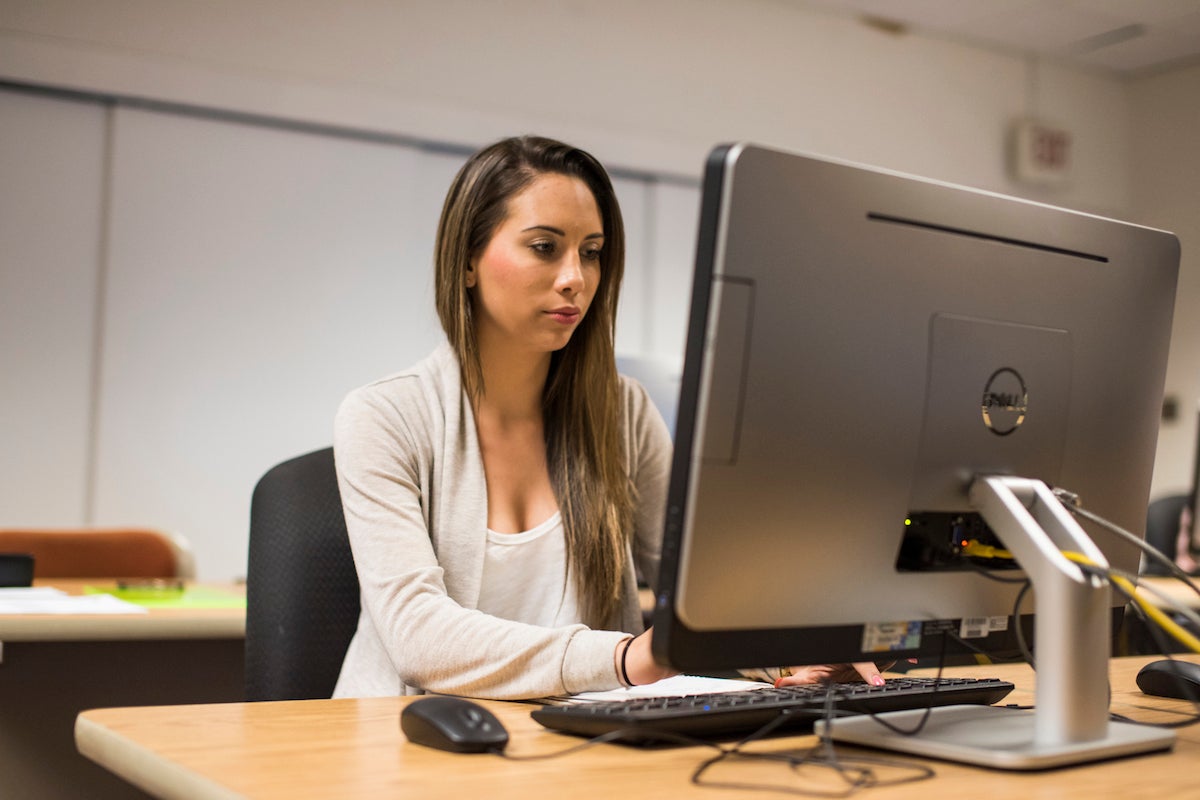The Florida Board of Governors has approved UCF’s phased-in plan to reopen this fall, including a new hybrid-class format called BlendFlex.
The new class strategy will include some face-to-face and online components, and has been added to the lineup of fully online and face-to-face classes.
The BlendFlex delivery model is being developed to provide flexibility for shifting scenarios for faculty and staff in and outside the classroom while maintaining UCF’s academic quality expectations.
Because of space limitations and physical distancing guidelines, some affected courses will require the class to be split into smaller cohorts so students would only be permitted to attend one in-person class meeting per week or every other week. When not in a physical classroom, students would participate in the rest of the instructions remotely either synchronously (live) or asynchronously (recorded session).
As students view fall schedules online, any BlendFlex model classes will be among the courses designated as a face-to-face modality. However, classes that follow the BlendFlex model will have notes added to the online MyUCF site that indicate the class will follow the BlendFlex approach; those notes are still in the process of being added. Specific details, such as which day of the week to attend class in person, will be determined later by faculty members.
“We’ve provided guidelines, such as capacity limits, to ensure safe distancing,” says registrar Brian Boyd. “However, the instructor is really in the best position to make that determination of how they schedule each group of students depending on the structure of the course and the activities they have planned.”
Some classes require a physical presence. For example: medical classes to practice psychomotor skills, spinal manipulation, body mechanics to transfer patients, etc.
“We need to know all the specific nuances of the musculoskeletal system and also the contributions of all the other systems for movement and health,” says Patrick Pabian, associate director of UCF’s School of Kinesiology and Physical Therapy. “Through touch, students identify tendon thickness, joint line barriers, and identify structural and physical differences in veins, nerves, and arteries.”
Some instruction can be done online, he agrees, but many physical components cannot be replaced online.
Faculty also will be required to make sure they don’t inadvertently disadvantage remote students and ensure that each cohort has equal face-to-face experiences throughout the term.
“We know that we may not have enough physical rooms to move all courses to larger spaces says,” says Tom Cavanagh, vice provost for digital learning, which oversees the campus Center for Distributed Learning. “For student-access purposes, we do not want to reduce enrollment to the new reduced-room capacity.”
Cavanagh explains more about the new delivery system:
Why do we need to implement BlendFlex?
We want to offer students as much choice as possible and avoid a system of limited, small face-to-face sections with everything else being only available online. Rather, for those classes where it makes sense, we want to allow for some meaningful face-to-face experiences for every student in the class.
Just as importantly, in any given class, at any given point in the term, we know that any number of students, or the faculty, may need to be remote for short or long durations. We need a strategy that will permit this type of flexibility while still allowing students to continue academic progress.
Will it be mandatory for students to attend face-to-face lectures for certain classes?
UCF’s interim provost has specifically asked faculty not to enforce rigorous in-person attendance requirements this fall. However, specific requirements per course are defined by each individual faculty member.
How will we prioritize students’ safety during face-to-face meetings?
All required protocols will be in place for any classroom sessions (physical distancing, face coverings, etc.).
Will this system be kept in place after a vaccine or treatment is available for COVID-19?
We are taking this one semester at a time. I think that what we do in the future will be in response to the health context and in compliance with safety guidelines. I will say that we do not intend at this point to continue the BlendFlex delivery strategy as a permanent model.
How will students be informed about the BlendFlex procedures?
We are working on several short videos. The first is a voiceover of a graphic from our website. We will have another one with more details available later.




